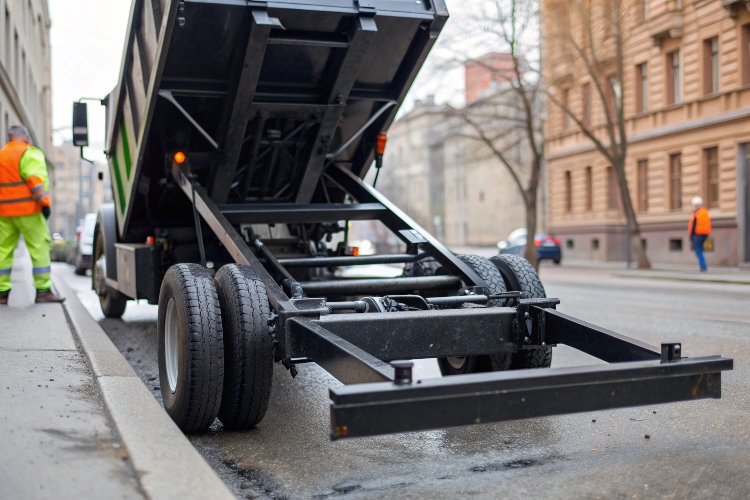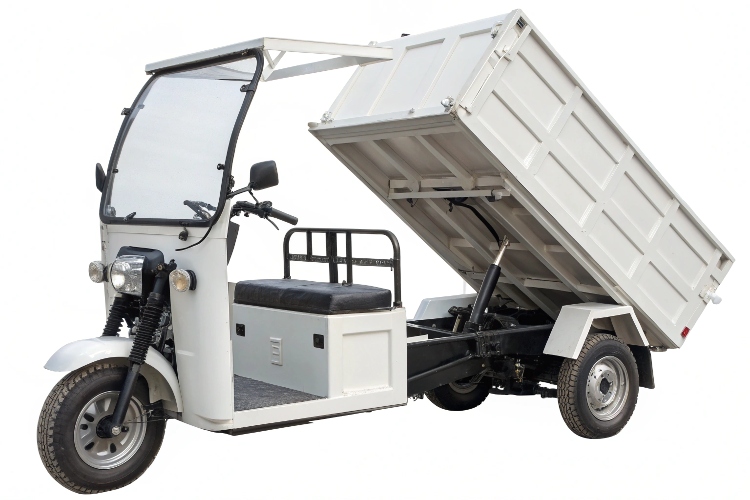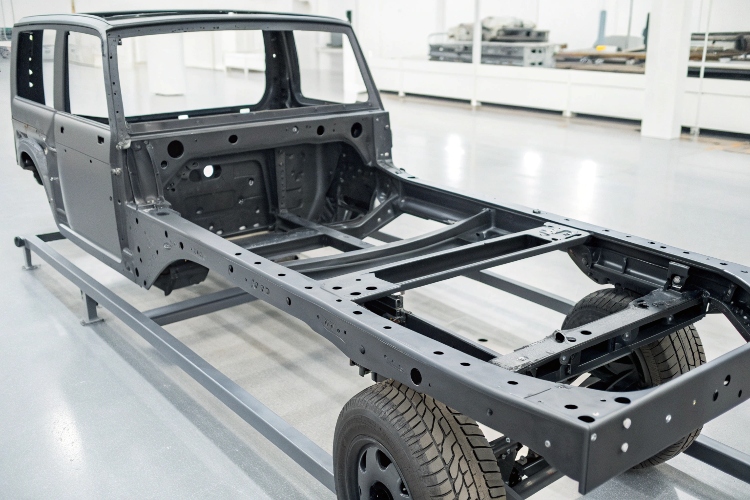Your city invested in a new fleet of sanitation tricycles, but they're already failing. The frames are bending, the dumpers are breaking, and waste collection is falling behind schedule.
Focus on a reinforced steel chassis with anti-rust treatment and a robust hydraulic dump mechanism. These two components determine the vehicle's lifespan, efficiency, and safety, making them the most critical factors for any municipal sanitation project.

When procurement officers for city cleaning projects visit our factory, they know exactly what to look for. They don't just kick the tires; they get underneath the vehicle to inspect the welds on the main beam and ask to see the hydraulic system in action. They understand that a sanitation tricycle isn't a standard cargo vehicle. It's a piece of heavy-duty machinery that has to endure punishing conditions every single day. Let's break down the critical components they inspect, so you can choose a vehicle that lasts.
How can I evaluate the structural strength and load capacity of a sanitation tricycle chassis?
You see a large waste bin on a tricycle, but that doesn't mean the frame can handle the weight. An overloaded chassis can bend or even crack, leading to catastrophic failure and serious safety risks.
Evaluate the chassis by checking for a reinforced, high-strength steel frame with an integrated welded main beam. Confirm the official load capacity meets your needs and inspect the suspension—look for oversized front forks and a differential rear axle designed for heavy loads.

The chassis is the backbone. Don't accept vague promises of "strong steel." Ask for specifics. We use high-strength steel with a solid, integrated main beam structure because it distributes the weight of a full load of wet, heavy garbage evenly. This prevents the frame from twisting on uneven roads. Just as important is the suspension that supports the load. Standard motorcycle suspension will fail quickly. You need oversized, dual-tube front forks and a heavy-duty rear axle, often a split-type differential, to provide stability and support. Finally, check the tires. Heavy-duty models like a 5.00-12 are essential for handling the weight and resisting punctures.
| Chassis Feature | Weak Design (Will Fail) | Strong Design (Built to Last) |
|---|---|---|
| Main Beam | Simple, bolted-on C-channel steel | Integrated, welded solid main beam |
| Suspensyon | Standard motorcycle coil springs | Oversized dual-tube forks; heavy-duty rear leaf springs |
| Rear Axle | Lightweight, single-piece axle | Split-type differential rear axle for stability |
| Gulong | Standard, thin-walled tires | Heavy-duty, puncture-resistant 5.00-12 models |
What types of dump mechanisms offer the best efficiency and durability for municipal sanitation work?
Your workers are wasting time with slow, manual crank-dumpers, or the electric mechanism is weak and prone to burning out. Inefficient dumping slows down collection routes and increases labor costs.
A hydraulic dump mechanism is the most efficient and durable choice. It provides the power needed to lift heavy, compacted waste and offers fast, reliable cycle times (often under 20 seconds), making it ideal for the repetitive demands of municipal sanitation.

For serious municipal work, there is no substitute for hydraulics. Manual systems are too slow and cause worker fatigue. Electric systems are often underpowered for heavy waste and can fail in wet conditions. A well-designed hydraulic system, controlled by a multi-way valve, offers unbeatable performance. A key feature to look for is a "self-locking bin press" function, which keeps the bin secure during transport and tipping. The tilt angle is also critical; it must be steep enough to ensure all types of waste—from dry leaves to wet, sticky garbage—can be discharged completely without a worker having to clear it manually.
| Dump Type | Pinakamahusay para sa | Weakness |
|---|---|---|
| Manual (Crank/Lever) | Very light, infrequent use | Slow, physically demanding, inefficient for routes. |
| Electric (Winch/Actuator) | Medium-duty, dry waste | Can be slow, may lack power for heavy loads, risk of motor burnout. |
| Hydraulic (Pump/Cylinder) | Heavy-duty, frequent municipal use | Most efficient, powerful, and durable for all waste types. |
How do chassis material choices affect long-term maintenance and performance?
Your fleet looked great for the first year. Now, the frames are covered in rust, especially around the welds and under the dump body, requiring constant and costly maintenance to keep them safe.
A reinforced steel chassis treated with an advanced anti-rust process like electrophoretic coating or phosphating is vital. This treatment creates a durable barrier against corrosion from wet waste and harsh weather, drastically reducing long-term maintenance costs and extending the vehicle's life.

Sanitation environments are incredibly corrosive. The combination of moisture, organic acids from waste, and cleaning chemicals will destroy a poorly protected frame. A simple layer of spray paint is not enough. High-quality manufacturers use a multi-stage process. Electrophoretic coating, for example, uses an electrical charge to bond the protective layer to the steel, ensuring it covers every corner and crevice. This is the same technology used in the automotive industry. For the dump body itself, which is in direct contact with waste, a corrosion-resistant material like stainless steel or heavily treated steel is a must. This up-front investment in material protection pays for itself many times over by avoiding future rust repair and repainting.
What technical specifications should I prioritize when selecting a sanitation tricycle?
You have a technical data sheet with dozens of numbers. It's confusing to know which specifications actually impact daily operations, efficiency, and operator safety in your city's unique environment.
Prioritize maneuverability (a turning radius under 4 meters), usability (easy loading/unloading of bins), and comprehensive safety features. These practical specifications ensure the vehicle can work effectively and safely in the tight, busy streets where waste collection happens.

Beyond the core chassis and dumper, the small details make a big difference. Your tricycle must be able to navigate narrow alleys and make tight turns. A turning radius of 3-4 meters is excellent for this. One of the most overlooked features is how easily standard municipal trash bins can be loaded and unloaded. Look for a low lift height or a compatible hydraulic lifting mechanism. Operator safety and comfort are also key for a long work shift. A full set of LED lights (headlights, brake lights, turn signals), rearview mirrors, and an ergonomic operator cabin are not luxuries; they are necessities. Finally, check for easy maintenance access, like clearly marked grease points for the chassis and dump pivots.
Key Specification Checklist:
- Pagliko ng radius: Under 4 meters for urban maneuverability.
- Bin Compatibility: Designed for easy loading/unloading of your city's standard waste bins.
- Safety Lighting: Full LED package (headlight, brake, turn signals).
- Operator Ergonomics: Comfortable seating and intuitive controls.
- Maintenance Access: Easily accessible grease points and hydraulic components.
- Warranty: Minimum 1-year warranty on the chassis and hydraulic system.
Konklusyon
A reliable sanitation tricycle is a long-term investment in your city's public health. Prioritize a strong, anti-rust chassis and a powerful hydraulic dumper—these are the foundations of a durable fleet.

